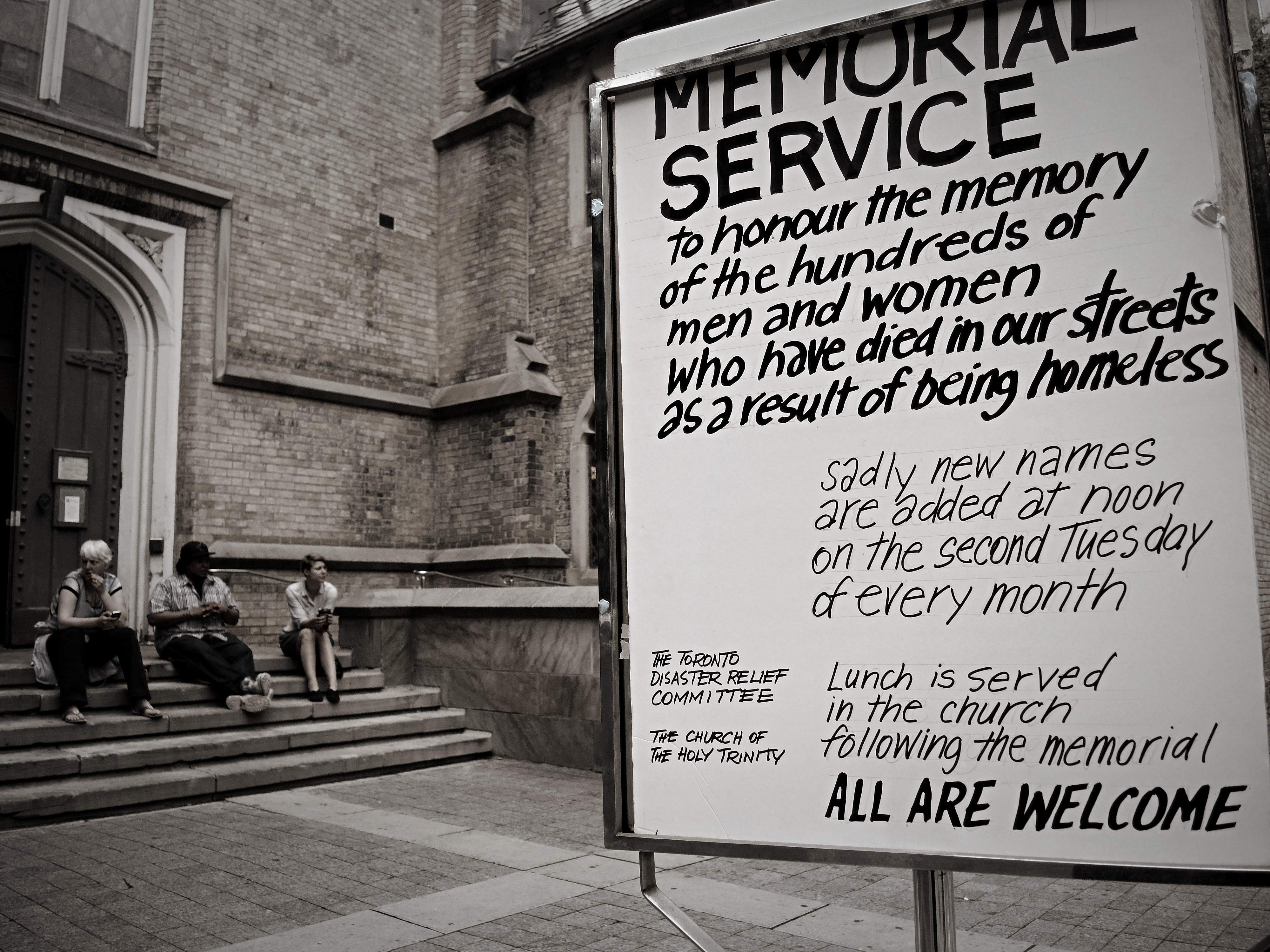It’s the last week of our supporter drive and boy, do we need you! Please helprabble.ca amplify democratic movements. Become a monthly supporter.
Both men died on the same day. In the morning. At the same shelter. Of unnatural causes. Because there was nothing natural about a 52-year-old and a 69-year-old dying in a men’s shelter in downtown Toronto.
“If there had been two deaths within an hour or two of each other in any other city run facility, like a seniors’ home or a daycare or a school, we would have at least seen a press statement or communication from the COO of the city or the coroner,” said Cathy Crowe, street nurse and anti-poverty activist.
“And we’ve had total silence.”
Total silence about two deaths that most likely were preventable had these two men been housed rather than living in a homeless shelter or on the streets.
Crowe encouraged people to email their city councillor and ask for more information as well as follow her on Twitter to learn more about how activists are pushing for more details to find out exactly what happened on the morning of June 30.
“Whether a death occurs inside or outside of the actual shelter has remained relatively stable with 20-30 per cent happening inside shelters, and 70-80 per cent occurring outside shelters, mainly in hospital,” said the City of Toronto on its website in a general statement about housing and homelessness services.
“The average age of a deceased resident has remained relatively stable at between 50 and 56 years.”
According to the city, there have been a total of 144 reported deaths of shelter residents in Toronto since 2007, 12 deaths in 2014 as of May 31.
“Overall, homeless individuals have 127 times higher chance of dying an early or preventable death than the average Canadian, with an estimated 1,350 homeless deaths in 2008,” said Statistics Canada in their 2009 report entitled Deaths and death rate, by province and territory.
“Half of these deaths are a result of suicide, with homeless people likely giving up life in the desperation of their circumstances.”
On June 10, another homeless Toronto man committed suicide.
“He tended to keep to himself,” said Greg Cook, an outreach worker at Sanctuary Ministries in Toronto, during the monthly homeless memorial vigil held on the second Tuesday of every month outside the Church of the Holy Trinity.
“He was a quiet man. He was quite prolific at collecting wine and beer bottles.”
In an article published in the August 2004 edition of the Journal of American Medical Association, E. Roy said, “The suicide rate among the homeless is 460 per 100,000 compared with an average Canadian suicide rate of 11.6, nearly 40 times higher.”
In the transgender community, a homeless young woman named Veronica jumped off an apartment balcony a few days ago.
“The transgendered community right now is in shock,” said Janice, who attended Tuesday’s memorial vigil.
In 2011, the National Center for Transgender Equality and National Gay and Lesbian Task Force based in Washington, surveyed 6,450 transgender and gender non-conforming people.
The study found that 41 per cent of transgender and gender non-conforming people have attempted suicide, a rate far higher than the national average of 4.6 per cent.
“It is part of social and legal convention in the United States to discriminate against, ridicule, and abuse transgender and gender non-conforming people within foundational institutions such as the family, schools, the workplace and health care settings, every day,” said the authors.
“Instead of recognizing that the moral failure lies in society’s unwillingness to embrace different gender identities and expressions, society blames transgender and gender non-conforming people for bringing the discrimination and violence on themselves.”
Michael Shapcott, Director of Affordable Housing and Social Innovation at the Wellesley Institute, welcomed a group of students from the Jack Layton Summer School for Youth Activism being held this week at Ryerson University.
“In 1998 when a group of people formed the Toronto Disaster Relief Committee, we had this rather crazy idea that people who were made homeless because of social and economic forces should be given the same consideration as people who were made homeless because of floods and ice storms,” said Shapcott.
“So we asked the mayors of Canada’s largest cities to declare homelessness a national disaster and to call on the federal government to provide emergency relief.”
In typical Laytonesque style, he managed to convince then-Toronto mayor Mel Lastman and 13 other city mayors to adopt the disaster declaration.
Six years later, Layton was speaking about homelessness inside the Church of the Holy Trinity during a federal election campaign.
“He dared to actually say that government policies that involved cutbacks to housing and homelessness programs left people dying on the streets of Toronto and across the country,” said Shapcott.
“The media blew this up into a big scandal and said Jack Layton was accusing others of murdering homeless people. He wasn’t. He was saying that what happens in federal parliament, in the provincial legislature, what happens at city hall affects the health and lives of people here in Toronto.”
Ten years later, things haven’t changed much. In fact, they’re worse.
“There’s still a rising tide of homelessness,” said Shapcott. “And housing insecurity continues to be deep and persistent in Toronto and across Canada.”




